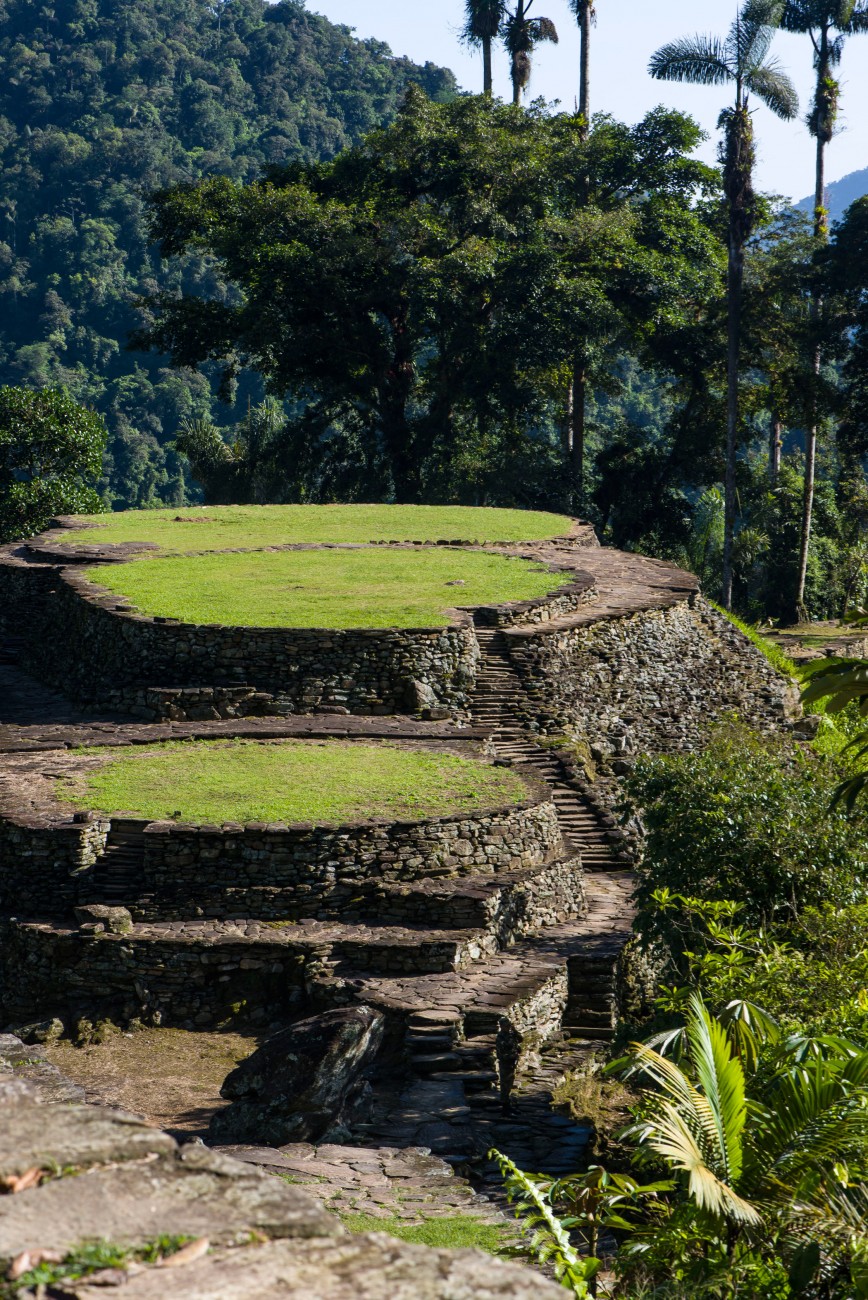
The Sierra Nevada de Santa Marta in northern Colombia encompasses a unique ecosystem as the world’s tallest coastal mountain range. During earlier periods (Nahuange), people concentrated in the coastal bays, where they fished, farmed, extracted salt, and produced tumbaga (gold-copper alloy) adornments and figures. From 900 CE, in the Tairona period, these groups settled higher on the rugged mountain slopes, constructing large urban centers (see photos below), water systems, and stone pathways. The Arhuaco are descendants of the Tairona and continue to live in the region, alongside the Kaggaba.
Using the lost wax method and depletion gilding, Tairona artists cast adornments and figurative pendants, many with bird or bat iconography. The small figure pendant on the left side of the case wears a bird-pectoral almost identical to the one displayed next to it, demonstrating how different kinds of ornaments were used by high-ranking figures to transform their bodies as a sign of a spiritual metamorphosis. Similar adornments and motifs are also represented on ceramics (on the right).

